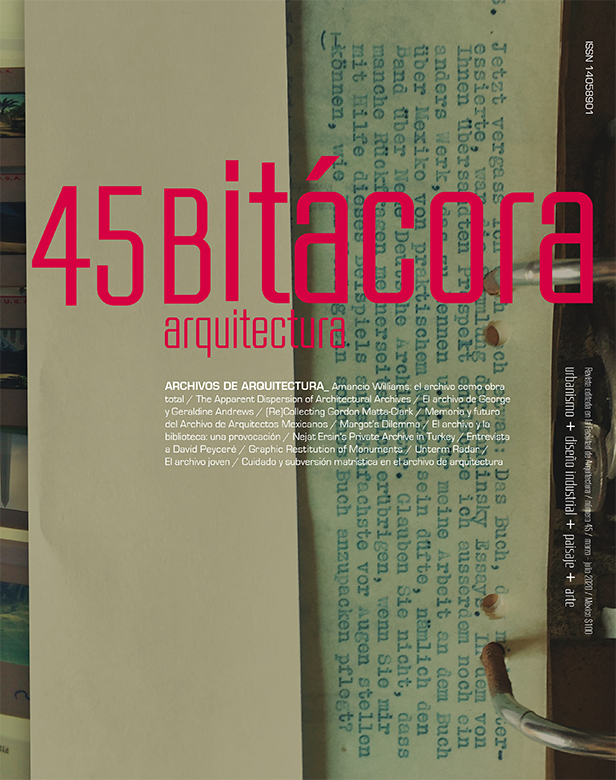Editorial 45
Main Article Content
Abstract
Nowhere like in architectural archives can the ritual value contained in the discipline’s representational objects be confirmed with such clarity; devotion to the original and to authenticity are in the very nature of archives. Holding the objects that were produced to design eminent buildings or those that belonged to key personalities of architecture produces an electrifying sensation. This sensation can turn into addiction and obsession—the famous archive fever that many of us have suffered. When this is complemented by a crucial finding, one that can change history, the experience is almost next to euphoria.
The archive is far more than a storeroom for physical objects that are related to one another. It is not a passive repository of memory—it informs and regulates. It is a crucial instrument for architecture and promotes its study, but despite its supposed neutrality, behind each decision in the archive, there are power structures and control systems. Perhaps this could explain the suspicion with which some limit their access rather than allowing it to anyone who is interested or how common it is for some researchers to jealously set aside collections for exclusive personal use.
On this number of BITÁCORA ARQUITECTURA we're questioning if the magic of coming across something by accident in an archive can happen on the screen, if it will be possible to substitute first-hand exploration and experience, if what we lose in the age of digital search engines will be the accidental discoveries in libraries and in document registries, not to mention the smell and texture of handmade drawings or antique books, if a time might actually come in which devotion to the original and the authentic will be gone forever.
Article Details
Citas en Dimensions Service
Bitácora Arquitectura by Universidad Nacional Autónoma de México is licensed under a Creative Commons Reconocimiento-NoComercial-SinObraDerivada 4.0 Internacional License.
Creado a partir de la obra en http://arquitectura.unam.mx/bitacora.html.

